I have been following Heather’s journey with keen interest and have seen her transition (online) to an extraordinary quilter. Her 2013 Quiltcon lecture was quite simply inspiring to watch. In this lecture, Heather Jones explores her muse, which she finds in surprising places, from the Walmart parking lot to the corrugated sides of a grain silo. The way she can see the extraordinary in seemingly ordinary places is truly a gift. Heather has a great respect for the art of quilt making and she loves to bring a modern twist to traditional patterns.
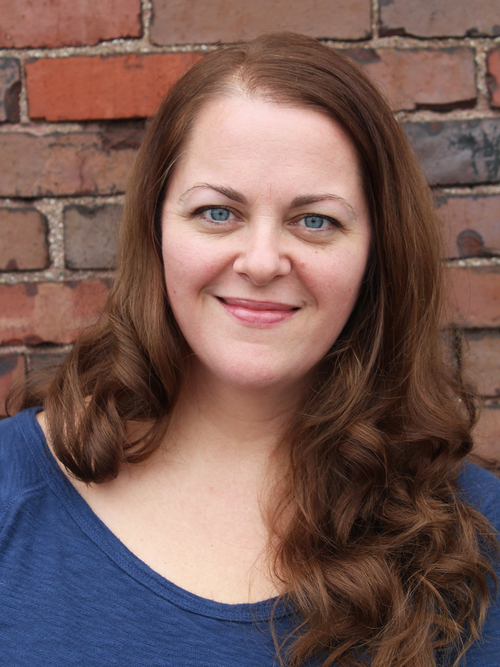
Tell us about how you started quilting and how you found modern quilting.
I have always admired quilts, even from a very early age, although I didn’t really grow up in a family of quilters. The only person in my family to quilt was my great-great aunt Ollie, who was my grandfather’s aunt. She made me a baby quilt when I was born in 1976, when she was 83 years old, and I still have it to this day, along with a few other quilts that she made. I also started to buy vintage and antique quilts when I was a teenager. I thought they were beautiful objects and I loved thinking about who might have made them.
While I have always been crafty and creative, and I loved making things with my hands, I was quite intimidated by the art of quilting for a long time and was scared to try. So I turned my focus to other creative outlets such as drawing, painting, and pottery.
I am completely self-taught, and over time I made a few quilts, although I certainly didn’t consider myself a quilter. However, I feel that there were three defining moments that would eventually lead me to where I am now. One was when I saw the original Gee’s Bend exhibit when it traveled to Cleveland, Ohio in 2004. When I remember that show, I still get goosebumps to this day. The second was the work of Denyse Schmidt, which I found online and through her first book. I was in awe of her gorgeous work from the first time I saw it, because it was so refreshing to see contemporary quilts that had a similar feeling to the vintage and antique ones that I had loved for so long. And lastly, the rise of the Modern Quilt Guild certainly placed me on the path where I find myself today. I followed some quilting blogs and learned about the MQG; when I learned that there was not a chapter in my area, I started one myself in February of 2010, although I still didn’t consider myself a quilter at that point. However, since I was elected the president of the newly formed group, I figured I needed to walk the walk, if I was going to talk the talk, so I began to focus on quilt making.
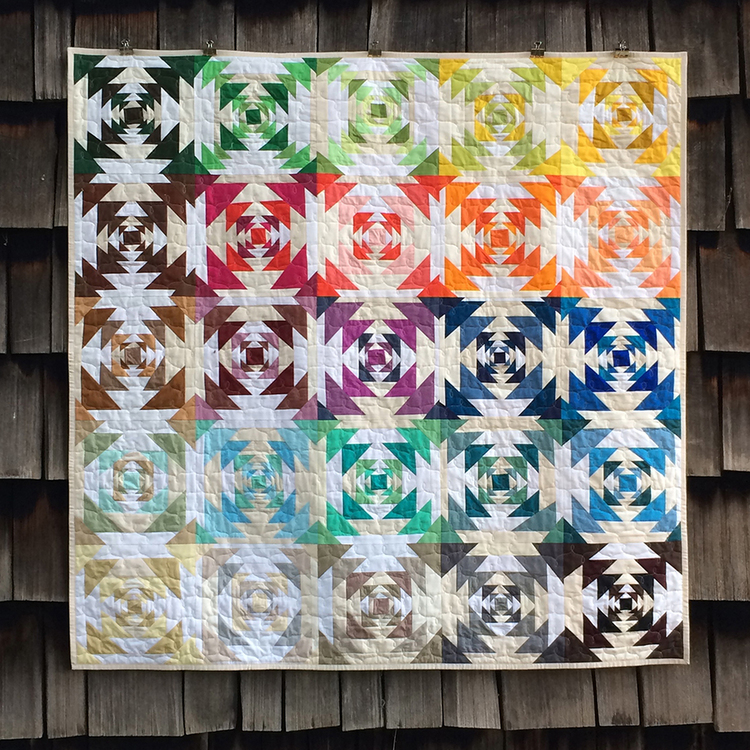
What does it mean to you to be a modern quilter and a modern woman?
As I have always been a craftsperson (I vividly remember making “pots” out of mud in my backyard, drying them in the sun, and then painting them with tempera paint when I was about five), I have always made things with my hands. I think it’s important to connect with ourselves through art and craft, and with the accessibility to connect with others who are like minded through the internet, blogs, and social media, it’s nice to know we are not alone. Many of my “real life” friends don’t have the same interests that I do, especially before I met some through my local guild, so I didn’t always feel that way. I love being able to connect with friends online, and to see the works of others from all over the world.
I also think it’s quite important to carry on the tradition of quilt making and to pass it along to future generations. I think the modern aesthetic in my work and in those of others often appeals to people who may not be interested in recreating traditional patterns, although the techniques are often the same in both forms. By sharing our work online, it becomes much more accessible to people all over the world, which is really pretty amazing, when you stop and think about it.
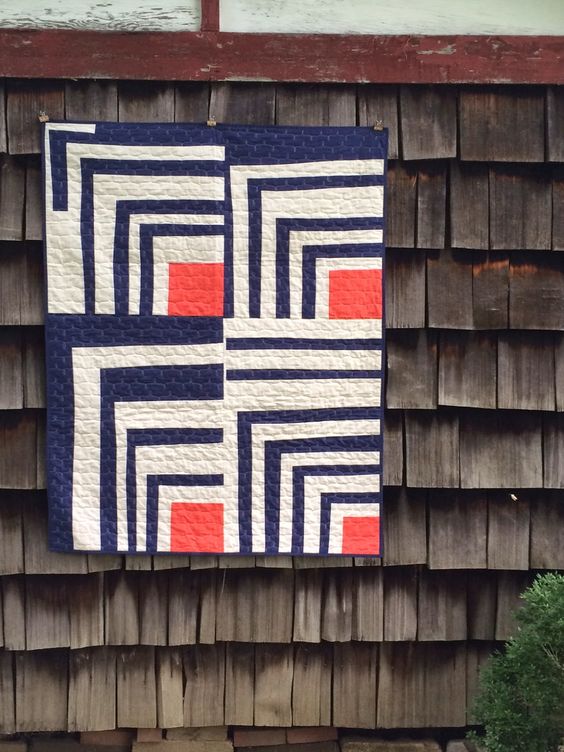
Which quilt that you have made represents you and why?
That’s a hard question. I think that all of my work is a representation of me, and a glimpse into what I was thinking about at that particular moment in time when it was made. I think one of my favorites is my Improv Half Log Cabin quilt. It was the first one I made after taking a bit of a break from quilting, after I finished my book. When I completed my projects, patterns, and manuscript for my book, Quilt Local: Finding Inspiration in the Everyday, there was a period of time that I couldn’t make a quilt. I didn’t want to think about fabric, so I actually pulled out paints that I hadn’t used for a long time, which was really refreshing. When I was finally ready to work with fabric again, this quilt was the first one that I made. I love that it is an improvisational take on a very traditional pattern, that is was created in a large scale format, and that it uses solid colors that feel quite painterly to me.
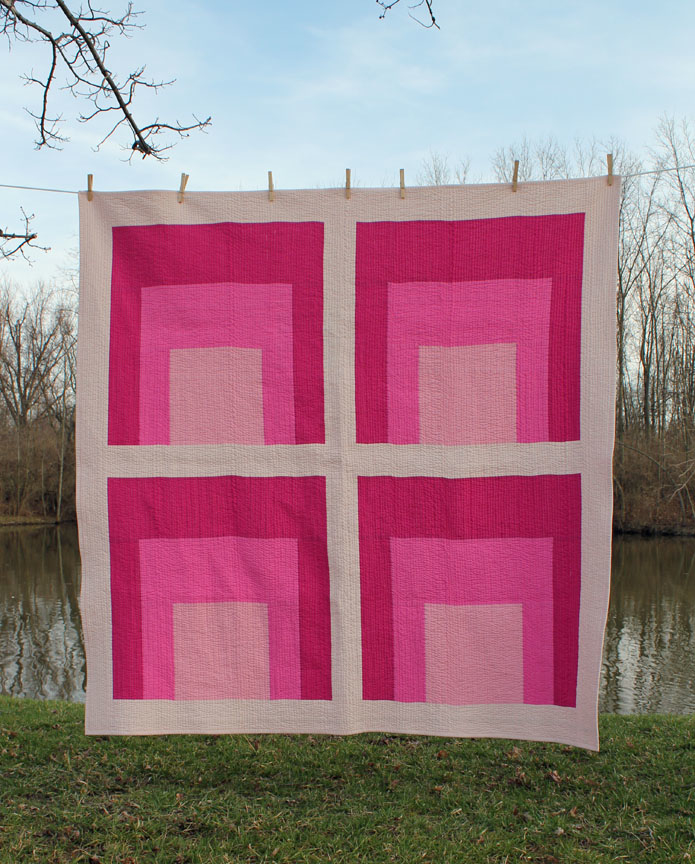
How do you connect with other modern quilters? What does it mean to you to have this sisterhood of modern women?
I belong to the Cincinnati Modern Quilt Guild, and I now have friends who I’ve made through that organization that I connect with on a regular basis. As I mentioned before, there was a time when none of my friends did anything like this, and while it’s great to have the ability to connect with others online, there is nothing like getting together with your tribe of people, and sharing with each other, learning from each other, and inspiring each other.
My daughter is young, but has begun to express interest in sewing and quilting. When she gets a bit older, I will be really excited to be able to share this craft with her and to continue to carry on this tradition with her as well.
Want to connect with Heather?
Website | Facebook | Instagram | Twitter
Did you know you can take an online fabric design class with Heather? She has several amazing classes to choose from, including improvisational Patchwork for Beginners and Piecing Large Scale Patchwork Quilts. Learning how to improvise block construction is a cornerstone of modern quilting. Heather Jones teaches three ways to experiment with improvisational piecing: with a log-cabin block, a stacked-coin block, and with a wonky cross block. This method of creating patchwork is perfect for mixing colorful fabric scraps, allowing you to forget about perfect measurements and straight lines, and learn to play with your creative intuition. At the end, you’ll understand how to combine blocks to produce one-of-a-kind, organic quilts – no “pattern” required.
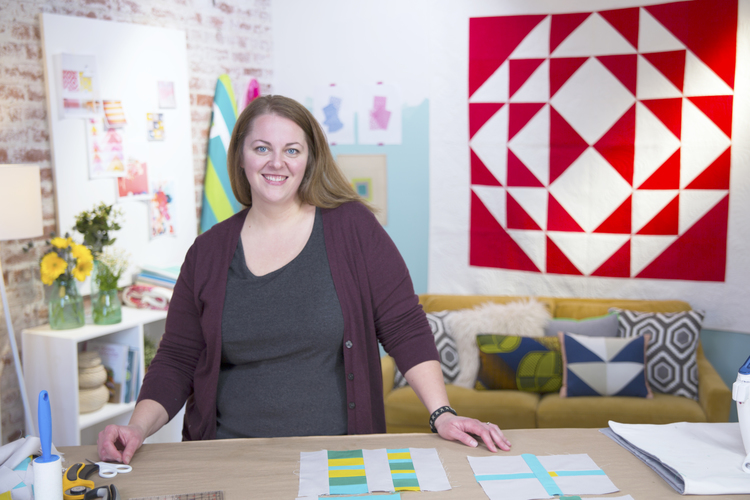
I want to know what has inspired you lately? Have you found inspiration in an unexpected place?
*This post contains affiliate links. This means that I will be compensated if you purchase anything after clicking through. Using my affiliate links supports me and this blog!